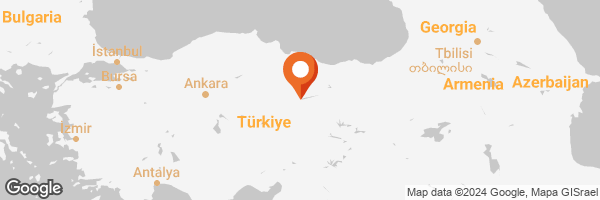English
Türkçe bölüm için lütfen buraya tıklayın.
Hello everyone!!!
I hope you are well or are trying to be well. I am fine and today we are travelling to Central Anatolia region with you. I told you that the last part of the Aegean region was the ancient city of Kaunos. After that, I returned home for 2 weeks and rested. You will understand that I started the new tour in a rested way.
We will visit Sivas, our first stop in Central Anatolia.
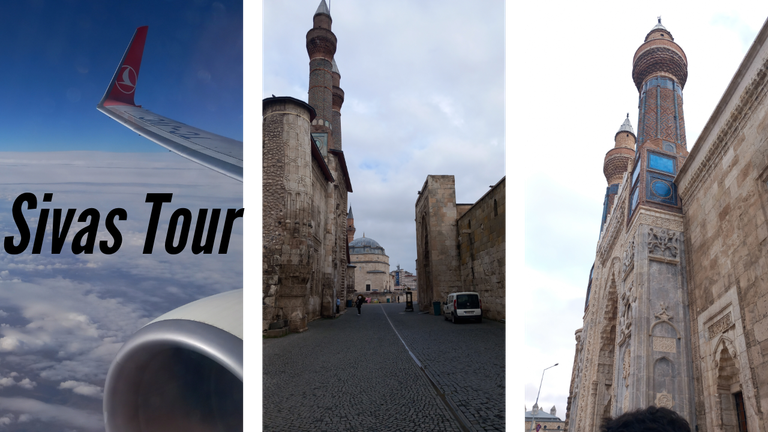

First of all, I would like to tell you about my visit because I took some photos that I liked very much. More precisely, I tried to take the same part from different angles.
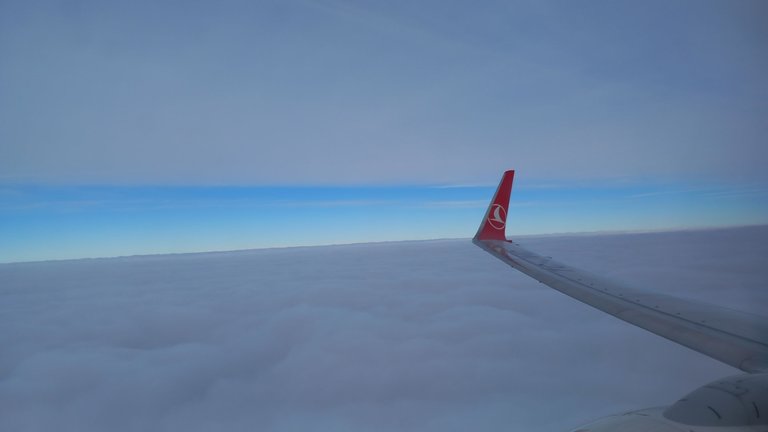
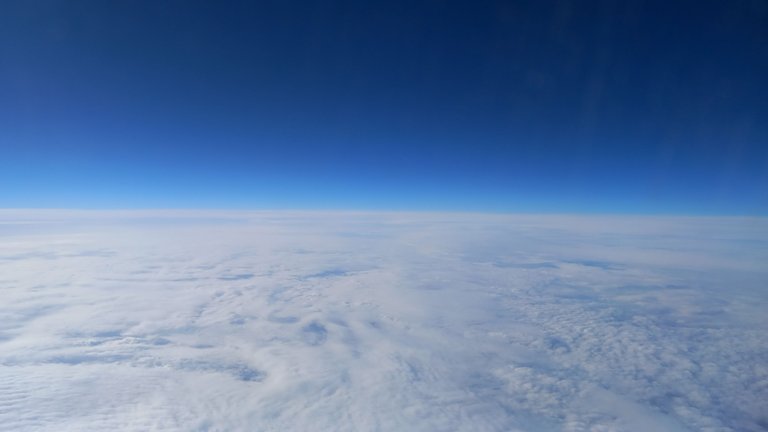
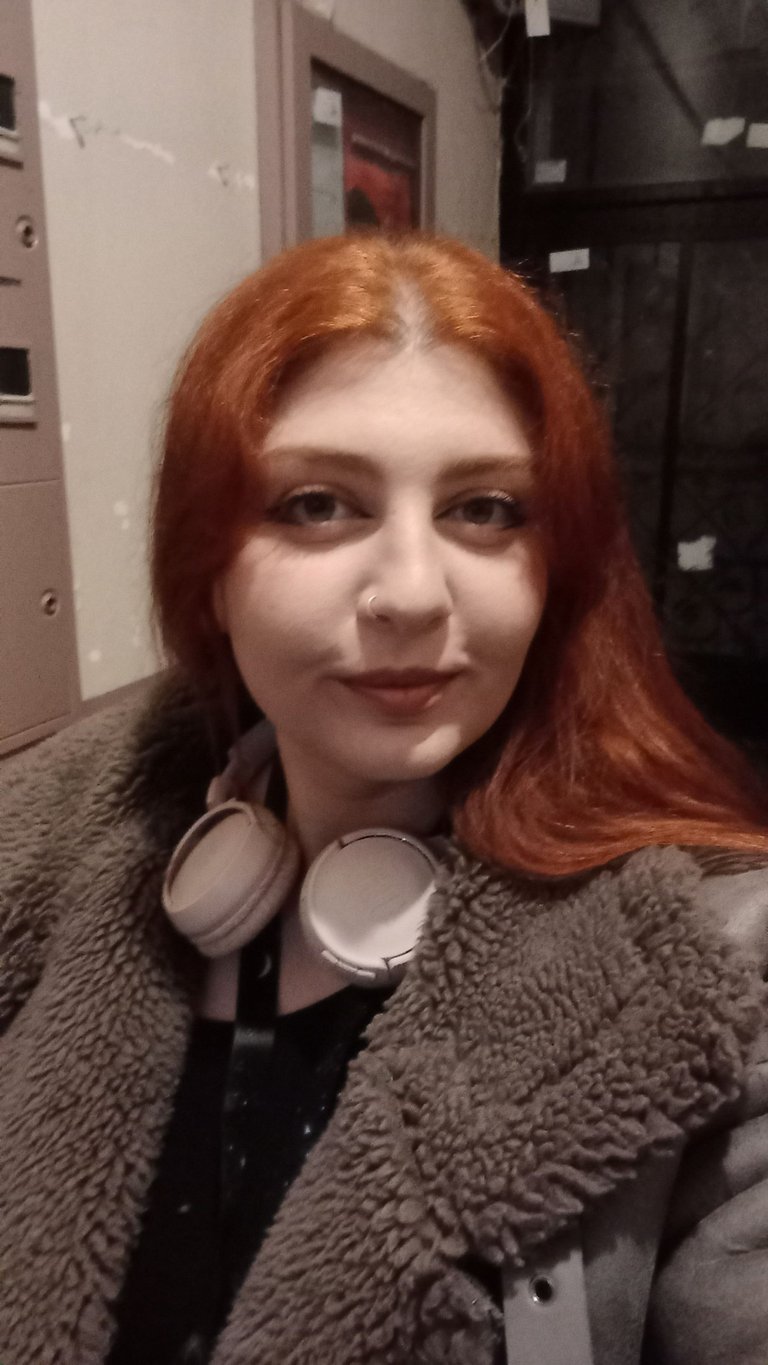
How I smile with the comfort of everything being ready when leaving Silivri 😁 I was trying to go to Havaist to get to Istanbul Airport at the crack of dawn and I was trying hard not to whine.
After being upgraded to Business Class free of charge, which was a great chance for me, I had a great flight and proceeded to the hotel where I would stay for my tour the next day. After a great night, I met my tour in the morning.
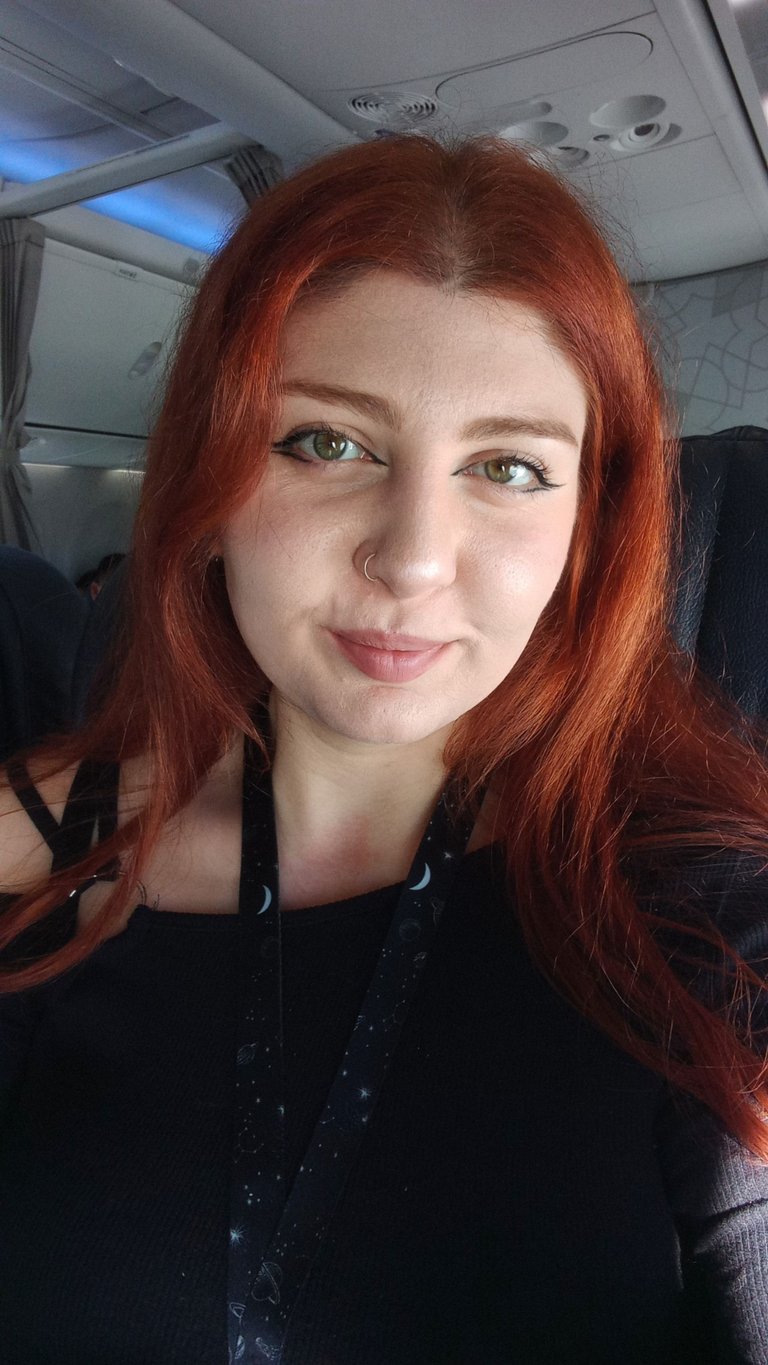
I think you can see the smile of satisfaction 😂 I was also able to practice a little Russian with the gentleman in the seat next to me. He was a businessman and he travelled to Sivas 3 - 4 times almost every year. Anyway. This is not the time to gossip.

On the way to our first stop, Gök Madrasa, we saw the minaret of Ulu Mosque. In my opinion, especially after the mosques we saw in Istanbul, this one was more impressive than the others.

I don't even want to explain it because there is 1 Great Mosque in almost every city, but the main reason is that it is older and more imposing than other mosques. After all, whatever you do, something will be better, more beautiful or bigger than others.
Historical Gök Madrasa
Now, since it is almost impossible to move in Sivas with large vehicles, I continue to the points where we move on foot. Our first stop, that is, the first point where I listened to the narration is Gök Madrasa.
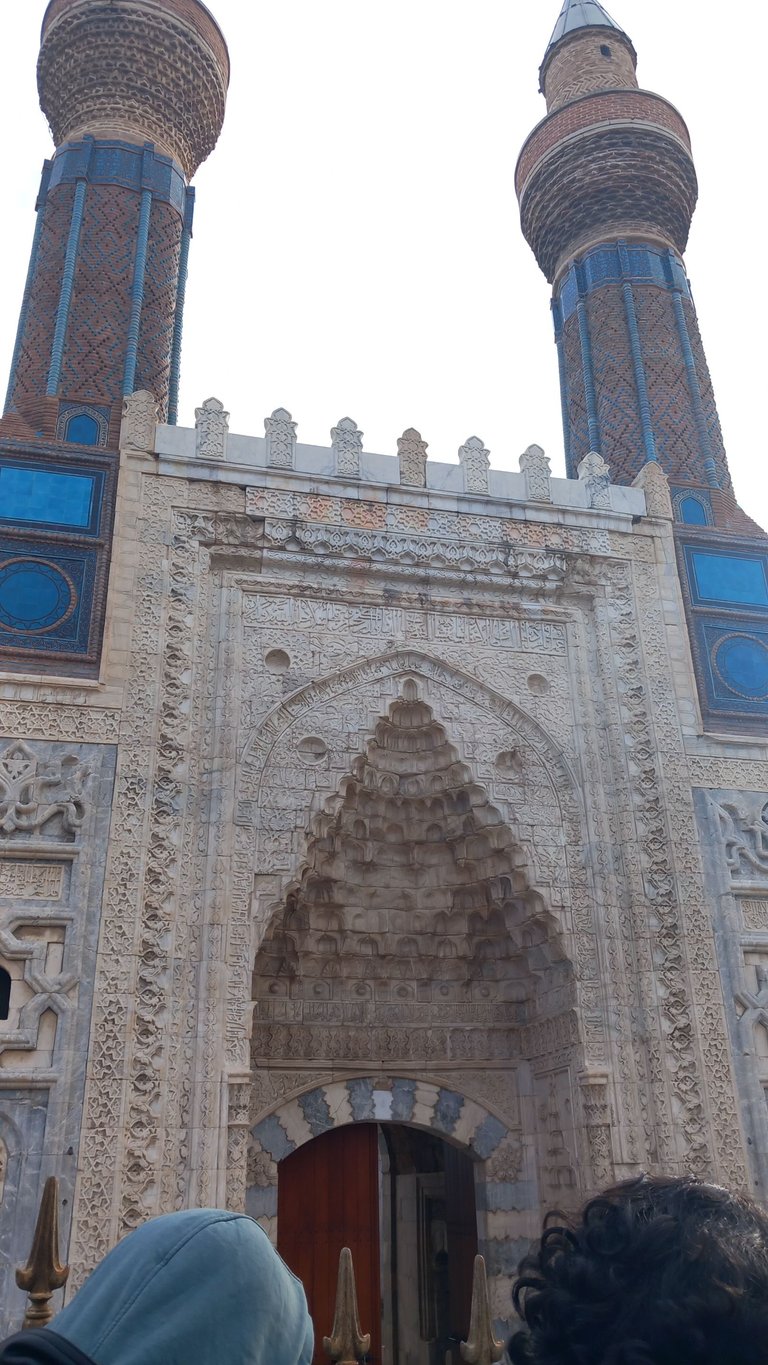
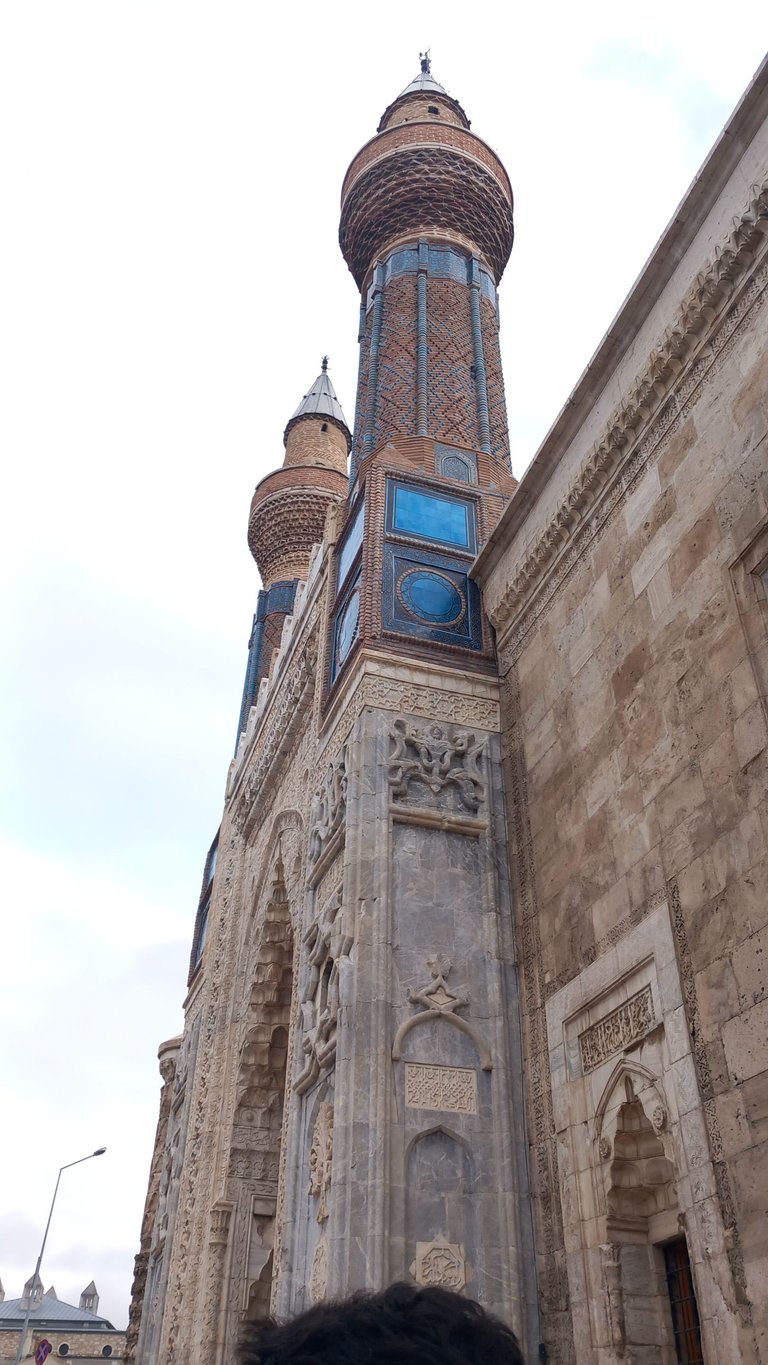
Gök Madrasa is a Seljuk architecture. We will see a lot of this type of architecture especially in Sivas and Kayseri because the most prominent and permanent works belong to them, which did not change with the Ottoman Empire that continued afterwards, only the engravings with precious stones in general were corrupted and / or stolen. After all, we are talking about the 1400s and the historical events that followed.
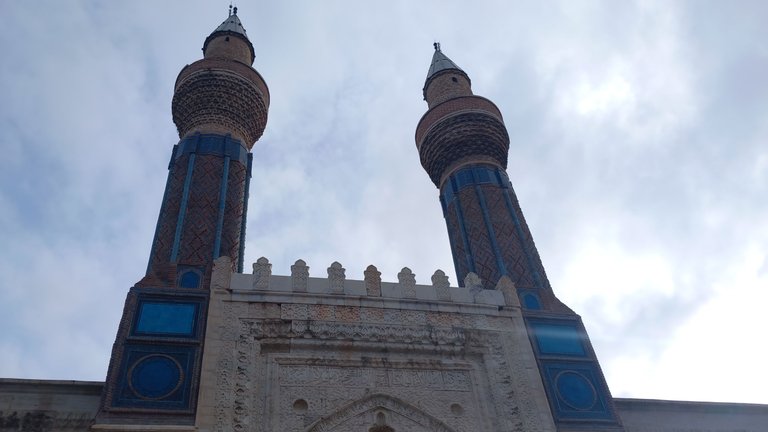
There are two things I want to mention about this madrasah. The first is its name and the second is why it is not symmetrical.
Firstly, it is not surprising that the name is actually quite simple and unimaginative for the people of the period. The abundance of tile workmanship in and around the region is now reflected in the architecture. Also, what colour tiles do we usually see? Blue. And what colour is the sky? Blue. Here is the name for you. Gök Madrasa. Otherwise they don't teach you how to get high here 😂😂😂
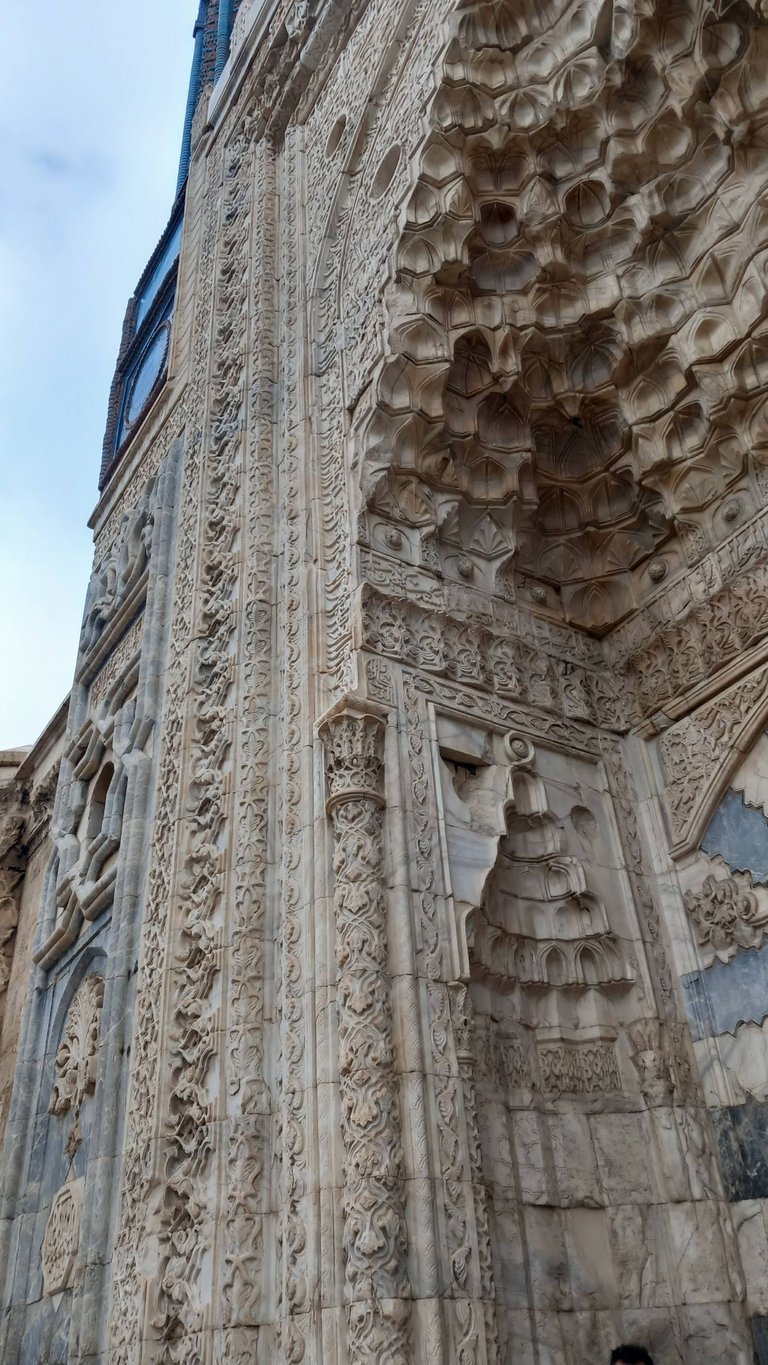

Let's talk about asymmetrical carvings. The architect Kaluytan, the architect of this madrasa, believed in Islam like a normal person of the time. At least as much as it came from the Arabs at that time. As far as we know, of course, he was thinking about this when he prepared these engravings by saying ‘Allah is the only perfect one’, which can be considered as a reason. This was the motivation of most of the architects, especially in that region and in religious beliefs.
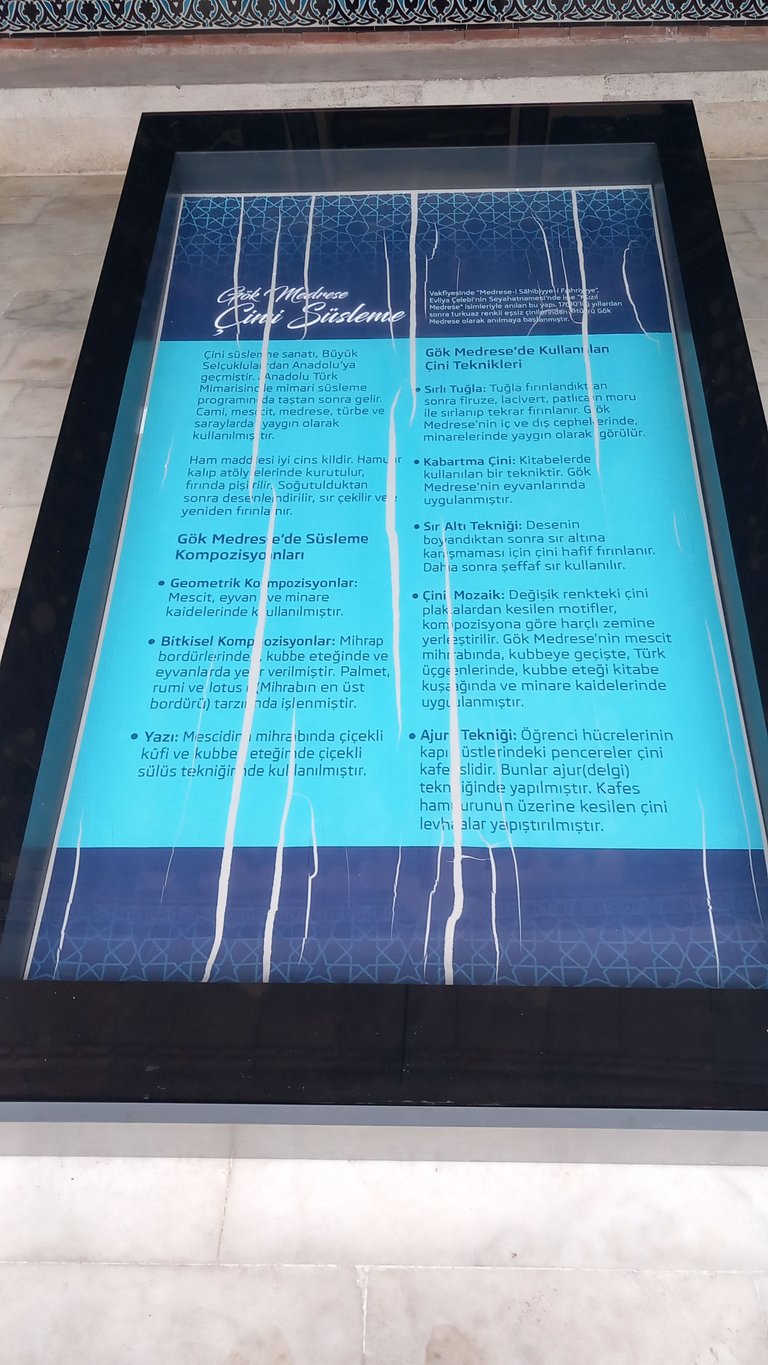
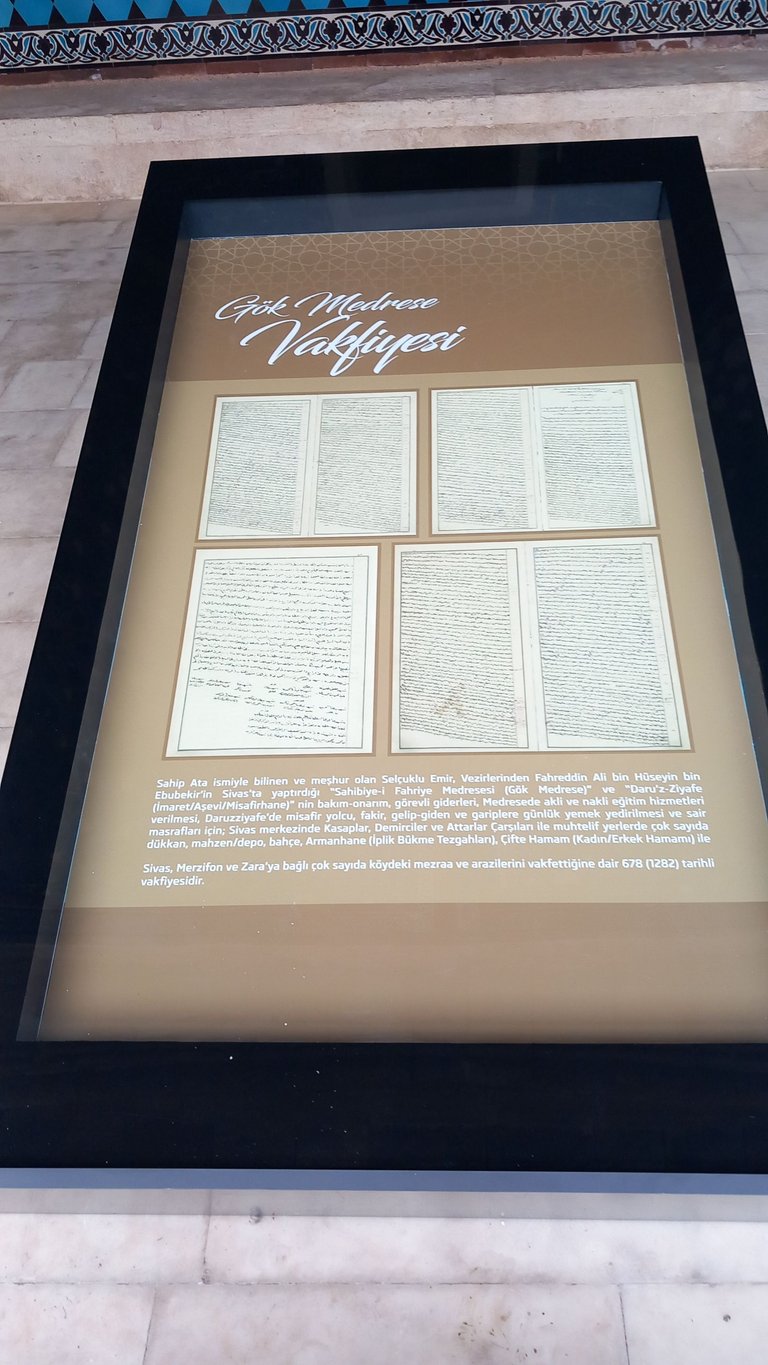
Although this doesn't make much sense to me, there is nothing to say about the old times. I try to look as objectively as I can. Of course, despite everything, we cannot ignore the beauty of these embroidery.
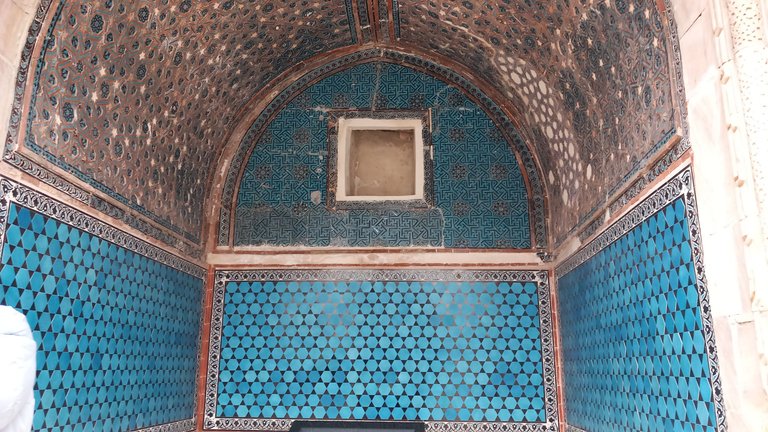
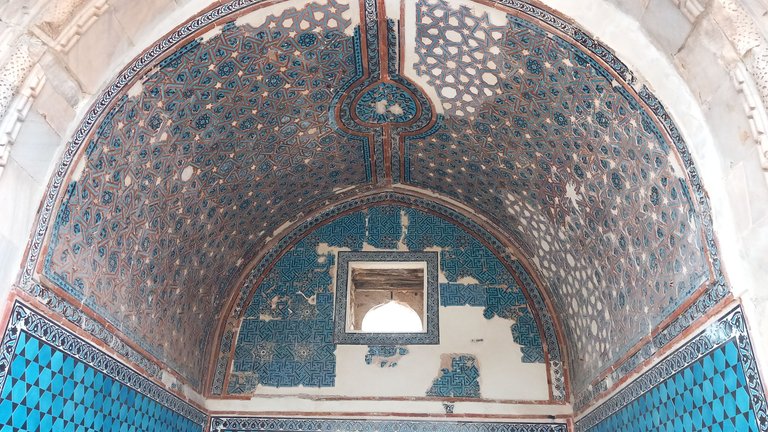
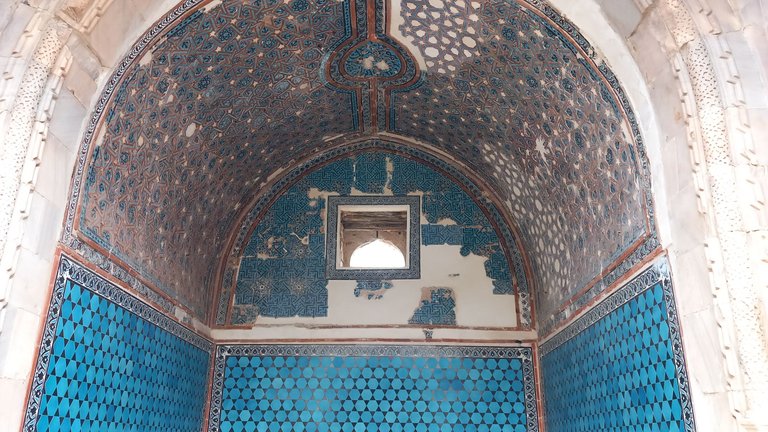
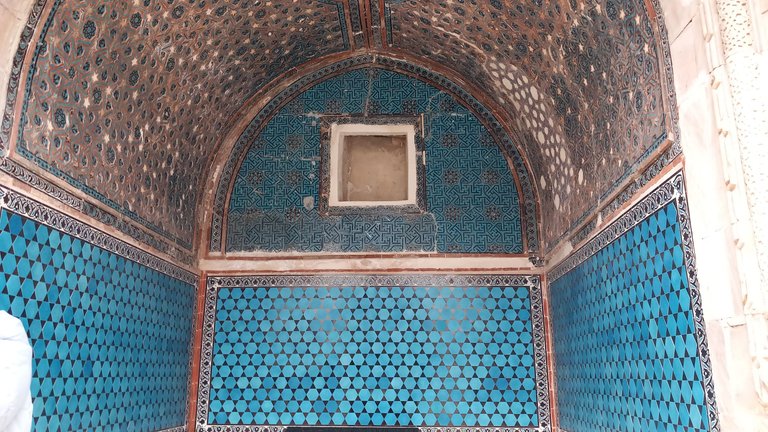
I'm sure that these small rooms have a meaning, but I probably don't remember it because I'm not interested in it and it's too complicated. Islamic architecture, to tell you a truth, doesn't interest me at all.
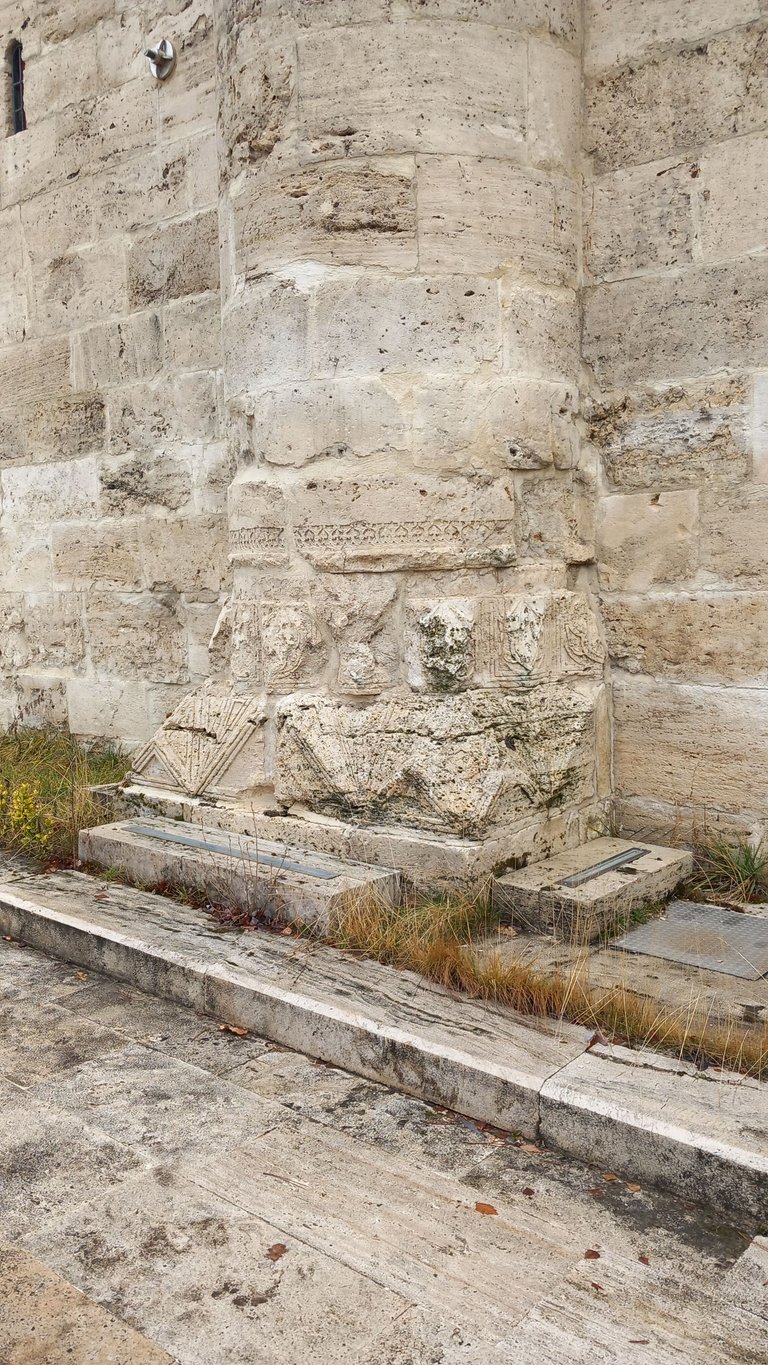

In this part, it is actually possible to see that the columns of this building are spolia. Well, I would like to ask a question. How appropriate is it for an architect who is so devoted to his religion to use the word ‘giaour’ in quotation marks?

Double Minaret Madrasa
Sahip Şemseddin Cüveyni, who ordered the construction of the madrasah, asked one of the most famous architects of the period for a very magnificent building. However, during the construction, this architect encountered problems such as the difficulties of the period, lack of money and shortage of labourers, and as a result, most things were left unfinished and not permanently built. More precisely, it is easily deformed.
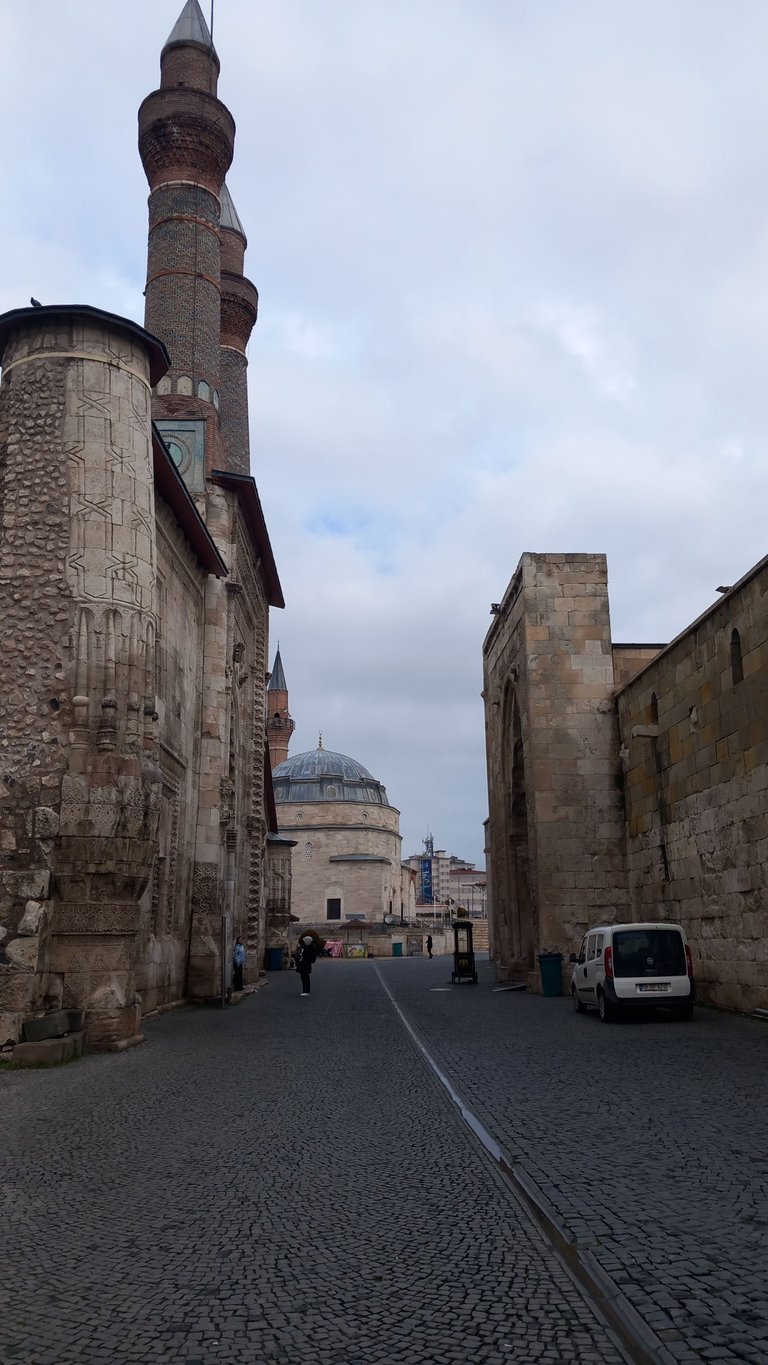
Therefore, even if the Double Minaret Madrasa looks like this from the front part, the rest of it is completely destroyed as below.
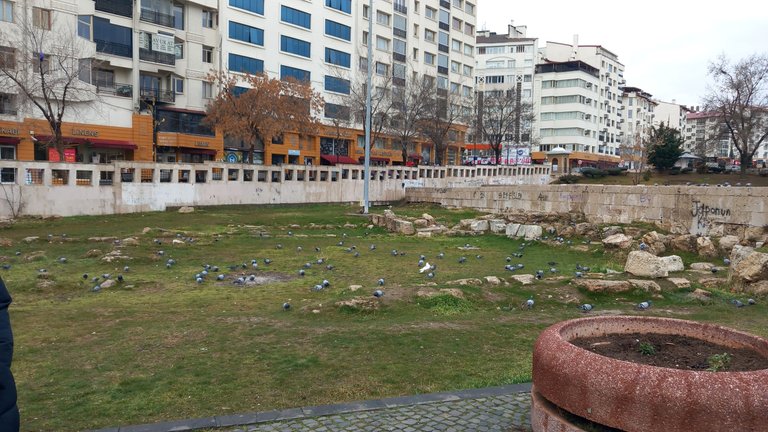
Of course, there was also an information board at the entrance of this madrasah. You can find detailed information about these and more on this board.
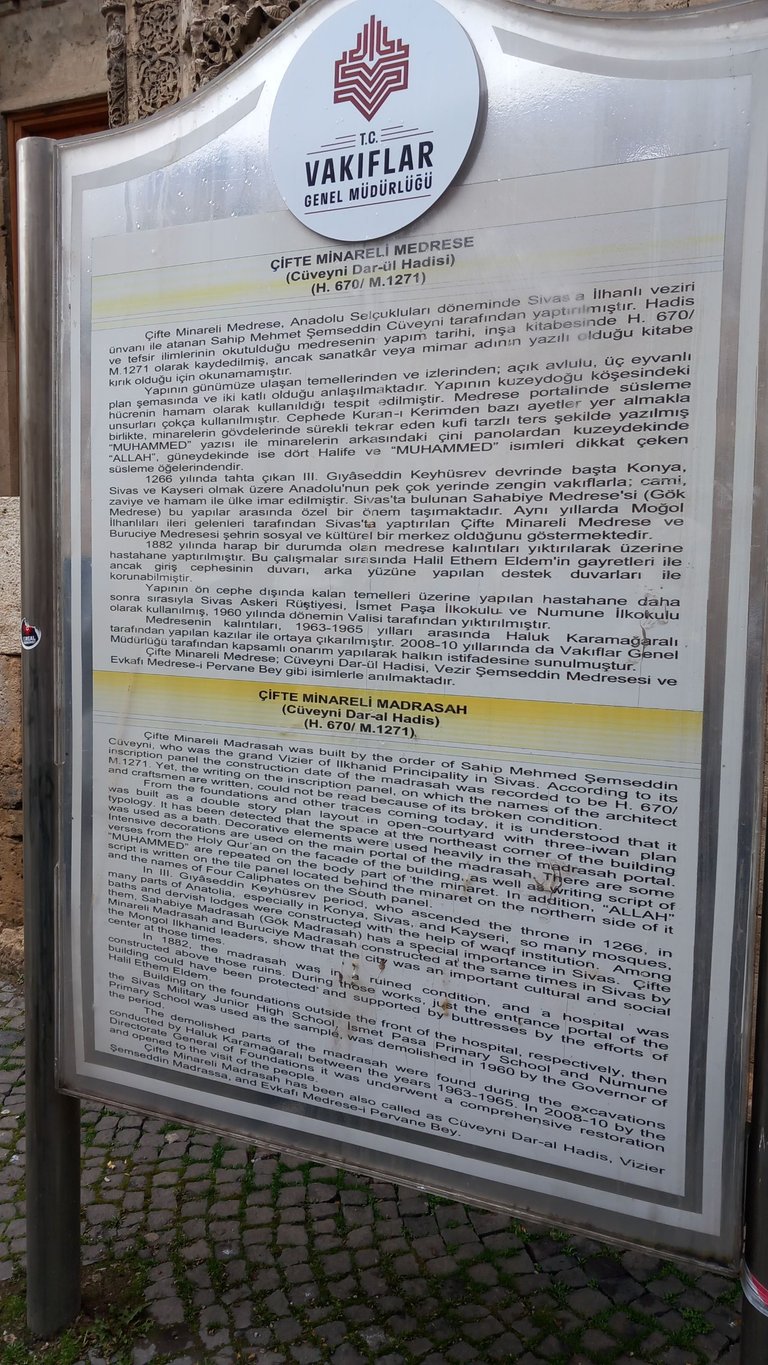

Shifaiye Madrasa
This madrasah will be the last stop of our Sivas tour for now. I will write the rest next week, but that place is a bit more special. Anyway. Shifaiye Madrasah was built by Izzeddin Keykavus I. He was encouraged by the fact that the health condition of the people and himself was not good.
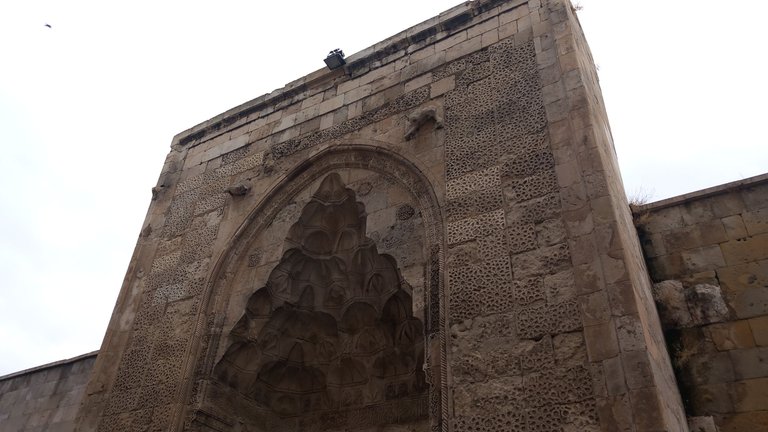
The embroidery here says ‘I am Seljukian!’ when you first look at it. Symmetry, the use of simple geometric shapes and tiny differences. After all, the thought again is ‘Allah is the only perfect one’.
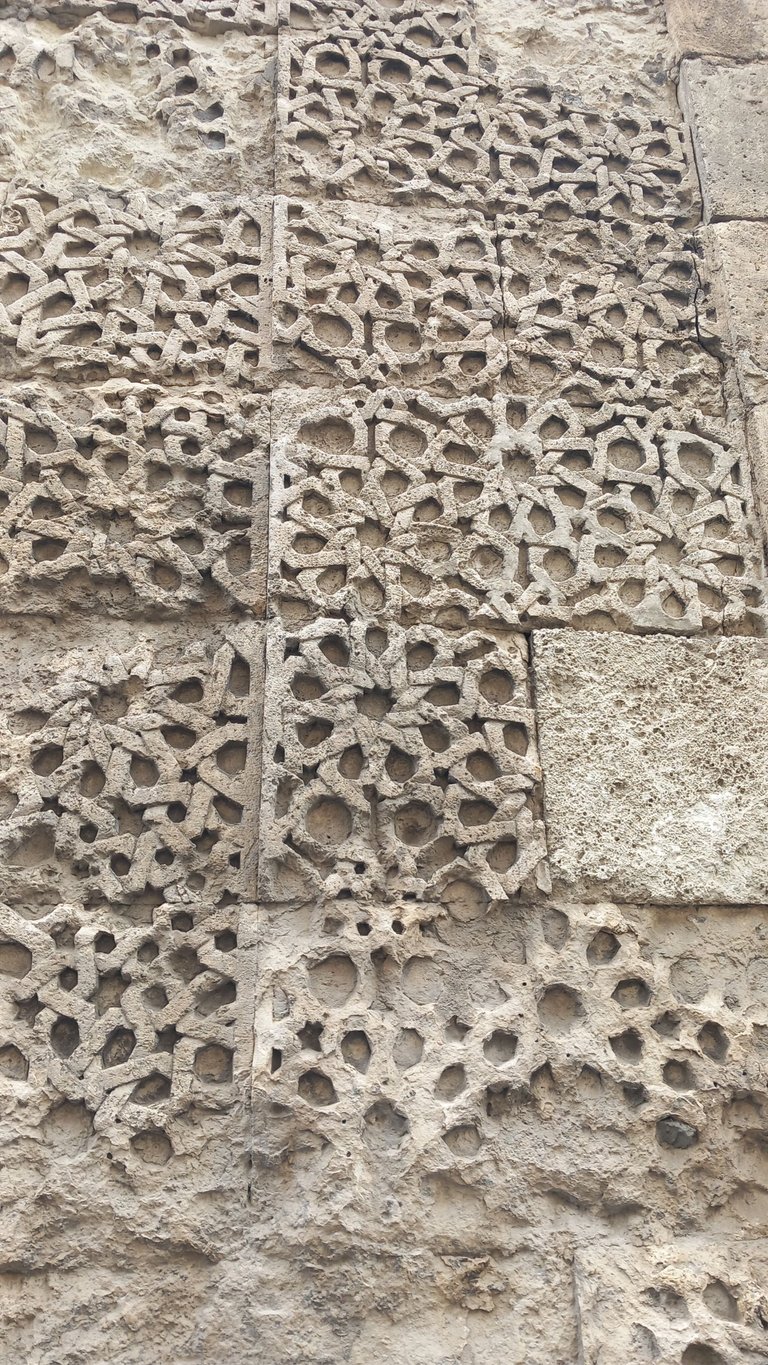

Nevertheless, both buildings have structures taken from ancient Greek/Roman columns. There is also another rumour. Sultan Keykavus died of the plague and left the construction of a ‘health centre’ as a will before his death, but due to lack of money and labour shortage, this will was fulfilled, although spolia materials were also used.

We have come to the end of our Sivas tour for today. Of course, I will share the rest with you next week. This time we will go to a tomb and a museum. That part will be a museum where our national feelings are a little more stirred. It is a fact that ideas will not die and I want to make a hint by saying that no one can deny it.

No one can make you forget, Ata'm. They will never make us forget. We commemorate the 86th anniversary of his physical absence with longing and mourning.
Take care of yourself, stay with health and love and please remember that;
You are the only one of you.


Herkese merhabaaa!!!
Umarım iyisinizdir ya da iyi olmaya çalışıyorsunuzdur. Ben iyiyim ve bugün sizinle İç Anadolu bölgesine geçiş yapıyoruz. Ege bölgesinin son kısmının Kaunos Antik Kenti olduğunu söylemiştim. Buradan sonra 2 haftalığına eve döndüm ve dinlendim. Yeni tura dinlemiş bir şekilde başladım anlayacağınız.
İç Anadolu bölgesi ilk durağımız olan Sivas'ı gezeceğiz.


İlk olarak size gidişimden bahsetmek istiyorum çünkü çok beğendiğim birkaç fotoğraf çektim. Daha doğrusu aynı kısmı farklı açılardan çekmeye çalıştım.



Silivri'den çıkarken her şeyin hazır olmasının rahatlığı ile nasıl da gülümsüyorum ama 😁 Sabahın köründe İstanbul Havalimanı'na gidebilmek için Havaist'e gitmeye çalışıyordum ve mızmızlanmamak için kendimi zor tutuyordum.
Ücretsiz bir şekilde Business Class'a yükseltilmemin ardından ki benim için çok büyük bir şanstı, harika bir uçuş gerçekleştirip ertesi günkü turum için kalacağım otele ilerledim. Harika bir gecenin ardından ise sabahına turumla buluştum.

Memnuniyetin gülümsemesini görebiliyorsunuzdur diye düşünüyorum 😂 Ayrıca yan koltuğumda olan beyefendi ile biraz Rusça pratiği de yapabildim. Kendisi bir iş adamı imiş ve neredeyse her yıl 3 - 4 kere Sivas'a gidiyormuş. Neyse. Dedikodu yapma zamanı değil.

Yolda ilk durağımız olan Gök Medrese'ye ilerlerken Ulu Cami'nin minaresini gördük. Bence, özellikle İstanbul'da bol bol gördüğümüz camilerden sonra burası diğerlerinden daha etkileyiciydi.

Neredeyse her şehirde 1 adet Ulu Cami olduğundan dolayı açıklamak bile istemiyorum fakat asıl sebebi diğer camilerden daha eski ve heybetli olması kısaca. Sonuçta ne yaparsanız yapın bir şey diğerlerinden daha iyi, daha güzel veya daha büyük olacak.
Tarihi Gök Medrese
Şimdi ise Sivas içerisinde büyük araçlarla ilerlemek neredeyse imkânsız olduğundan dolayı yürüyerek ilerlediğimiz noktalara devam ediyorum. İlk durağımız ise, yani anlatım dinlediğim ilk nokta Gök Medrese.


Gök Medrese bir Selçuklu mimarisi. Özellikle Sivas'ta ve Kayseri'de bu mimari tipini bol bol göreceğiz çünkü en belirgin ve kalıcı eserler onlara ait ki zaten sonrasında devam eden Osmanlı İmparatorluğu ile değişen bir şey olmamış, sadece genel olarak değerli taşlarla olan işlemeler bozulmuş ve/veya çalınmış. Sonuçta 1400'lerden ve devamında gelen tarihi olaylardan bahsediyoruz.

Bu medrese ile ilgili bahsetmek istediğim iki şey var. Birincisi ismi ve ikincisi ise neden simetrik olmayışı.
İlk olarak isminin aslında, dönemin insanlarının, isim konusunda oldukça basit ve hayal gücünden uzak olması hiç de şaşırtıcı değil. Bölgedeki ve çevresindeki çini işçiliklerinin fazlalılığı artık mimariye de yansıyor. Ayrıca bizim genellikle gördüğümüz hangi renk çini var? Mavi. Peki gökyüzü ne renk? Mavi. Alın size isim. Gök Medrese. Yoksa burada size nasıl kafayı bulacağınızı öğretmiyorlar 😂😂


Gelelim asimetrik işlemelere. Bu medresenin mimarı olan mimar Kaluytan dönemin normal bir insanı gibi İslam dinine inanıyordu. Yani en azından o dönemde Araplardan geldiği kadarına. Bunu neden olarak sayabileceğimiz bir şekilde de "Tek mükemmel olan Allah'tır" diyerek bu işlemeleri hazırlatırken bunu düşünüyor, bizim bildiğimiz kadarıyla tabii ki. Sadece özellikle o bölgede ve dini inançta olan mimarların çoğunun motivasyonu bu idi.


Her ne kadar bu bana çok da mantıklı gelmese de eski zamanlara diyecek bir şey yok. Elimden geldiğince tarafsız bakmaya çalışıyorum. Tabii her şeye rağmen bu işlemelerin güzelliğini görmezden gelemeyiz.




Bu küçük odaların da bir anlamı olduğuna eminim ama hem ilgimi çekmediğinden hem de çok karışık olduğundan büyük ihtimalle ben hatırlamıyorum. İslam mimarisi ne yalan söyleyeyim hiç mi hiç ilgimi çekmiyor.


Bu kısımda ise aslında bu yapının sütunlarının devşirme olduğunu görmek mümkün. Peki, bir soru sormak istiyorum. Dinine bu kadar bağlı bir mimarın tırnak içinde olduğunu belirterek "gavur" işini kullanıyor olması ne kadar uygun?

Çifte Minareli Medrese
Medresenin yapım emrini veren Sahip Şemseddin Cüveyni, dönemin en ünlü mimarlarından birinden çok görkemli bir yapı ister. Ancak inşaat sırasında, dönemin zorlukları, parasızlık ve işçi kıtlığı gibi sorunlarla karşılaşır bu mimar ve hâliyle çoğu şey yarım kalır ve kalıcı bir şekilde yapılmaz. Daha doğrusu kolay bir şekilde deforme olur.

Bu yüzden ön kısımdan Çifte Minareli Medrese bu şekilde görünse dahi kalan kısmı aşağıdaki gibi tamamen yıkılmış durumda.

Tabii bu medresenin girişinde bilgilendir panosu da bulunuyordu. Bunlarla ve daha fazlası ile ilgili detaylı bilgiyi bu panodan bulabilirsiniz.


Şifaiye Medresesi
Bu medrese şimdilik Sivas turumuzun son durağı olacak. Kalanını bir sonraki hafta yazacağım ama orası biraz daha özel bir yer. Neyse. Şifaiye Medresesi, I. İzzeddin Keykavus tarafından yaptırılıyor. Özellikle de halkın ve kendisinin sağlık durumunun iyi olmaması onu bu konuda teşvik ediyor.

Buradaki işlemeler de ilk baktığınıza size "Ben Selçukluyum!" diyor. Simetri, basit geometrik şekillerin kullanımı ve minik farklar. Sonuçta yine düşünce "tek mükemmel olan Allah'tır.".


Ama yine de her iki yapıda da Antik Yunan/Roma sütunlarından devşirme yapılar var. Ayrıca bir rivayet daha bulunuyor. Sultan Keykavus, vabadan dolayı vefat eder ve vefat etmeden önce bir "sağlık merkezi"nin yapımını vasiyet olarak bırakır fakat yine de parasızlık ve işçi kıtlığından dolayı devşirme malzemeler de kullanılmasına rağmen bu vasiyet yerine getirilir.

Bugünlük Sivas turumuzun sonuna geldik. Tabii haftaya kalanını paylaşacağım sizlerle. Bu sefer bir türbe ve müzeye gideceğiz. O kısım biraz daha milli duygularımızın depreştiği bir müze olacak. Fikirlerin ölmeyeceği bir gerçektir ve kimse inkâr edemez diyerek bir imada bulunmak istiyorum.

Kimse unutturamaz Ata'm. Unutturamayacaklar. Bedenen yanımızdan ayrılışının 86. yıl dönümünü hasret ve yasla anıyoruz.
Kendinize dikkat edin, sağlık ve sevgiyle kalın ve lütfen unutmayın ki;
Bu dünyada sizden başka bir tane daha yok.

Previous Chapters
From All Over Turkiye 22 / Türkiye'nin Dört Bir Yanından 22
From All Over Turkiye 21 / Tükiye'nin Dört Bir Yanından 21 From All Over Turkiye 20 / Türkiye'nin Dört Bir Yanından 20 From All Over Türkiye 19 / Türkiye'nin Dört Bir Yanından 19 From All Over Türkiye 18 / Türkiye'nin Dört Bir Yanından 18 From All Over Turkiye 17 / Türkiye'nin Dört Bir Yanından 17
From All Over Turkiye 16 / Türkiye'nin Dört Bir Yanından 16
From All Over Turkiye 15 / Türkiye'nin Dört Bir Yanından 15
From All Over Turkiye 14 / Türkiye'nin Dört Bir Yanından 14
From All Over Turkiye 13 / Tükiye'nin Dört Bir Yanından 13
All of my content is written in Turkish first and then with the help of translators and dictionaries below translated in English.
https://www.seslisozluk.net P.S. If you know English AND Turkish, I do that too... If you see a translation discrepancy that was on purpose. I did think this is as proper as I could do. Because there are many differences between these languages.
Not: Hem Türkçe hem de İngilizce biliyorsanız, ben de biliyorum... Eğer çeviri farklılığı görürseniz bunun bilinçli olduğunu bilin lütfen. Bunu yapabileceğim en uygun şekilde yaptığımı düşünüyorum. Çünkü bu iki dil arasında çok fazla fark var.
https://www.deepl.com/translator
